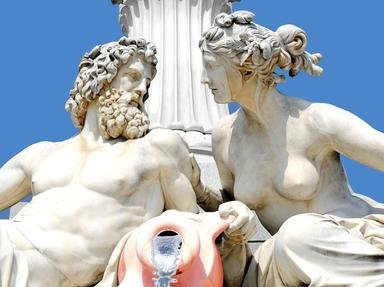Quiz Answer Key and Fun Facts
1. Which of the following was NOT said to have been crafted by Hephaestus, the Greek god of fire and the forge?
2. Who forged the magical sword Gram, before it was made available to Sigmund, according to the Lay of the Volsungs?
3. Which of the following was NOT one of the Trí Dée Dána, the three "gods of art," who forged the weapons that the Tuatha Dé Danann used to battle the Fomorians in the so-called mythological cycle of Irish myth?
4. According to the "Book of Enoch", who taught the art of weaponsmithing to mortal men?
5. In the Kurdish legend known as "Kavah the Blacksmith and Zohak," what is Kavah's great accomplishment?
6. In Germanic legend, who reforged the shards of the sword Balmung before it was used to slay the dragon Fafnir?
7. In the legends surrounding the court of Charlemagne, three great weaponsmiths each forged three mighty swords, and each of the nine swords required three years in the making. Each sword went to a mighty hero - and all nine were broken by a single blow from Oliver's still mightier blade Glorious. Which of the following is NOT one of the weaponsmiths who so wasted nine years a-forging?
8. In Hindu mythology, who is the "divine artificer" who forged Indra's thunderbolt and other weapons out of the stuff of the sun?
9. What team of smiths forged Mjollnir, the warhammer wielded by the Norse god Thor?
10. In voudou belief, who is the loa associated with blacksmiths?
11. In the Ulster Cycle of Irish mythology, how did Cullann the Smith play a role in the renaming of Setanta?
12. In Wagner's "Ring Cycle", who forged the fabulous Tarnhelm?
13. The Tibetan patron of blacksmiths, Garba Nagpo, is said to have been the son of what father?
14. In Norse mythology, at the behest of the Aesir, the dwarves of Svartheim forge a magical artifact out of the roots of stones, the breath of a fish, the beards of women, the noise made by the footfalls of cats, the sinews of bears, and the spittle of a bird. What is the artifact they forged of these unlikely ingredients?
15. For what is the tenth century blacksmith Dunstan chiefly remembered, according to medieval Christian legend?
16. In the Finnish national epic Kalevala, who forged the mysterious and miraculous Sampo?
17. According to the cycle of tales surrounding the Germanic hero Dietrich of Bern, who forged the magical sword Nagelring?
18. According to "Orlando Furioso", the sorceress Falerina forged the enchanted sword Balisarda for what specific purpose?
19. In Javanese legend, Ken Angrok commissioned the master swordsmith Mpu Gandring to forge a sacred kriss for Ken Angrok to use to win a wife and a kingdom. What magical geas did Mpu Gandring place upon the blade?
20. In Norse mythology, which of the following is NOT an artifact said to have been forged by the dwarven master smiths known as the sons of Ivaldi?
Source: Author
xaosdog
This quiz was reviewed by FunTrivia editor
agony before going online.
Any errors found in FunTrivia content are routinely corrected through our feedback system.

